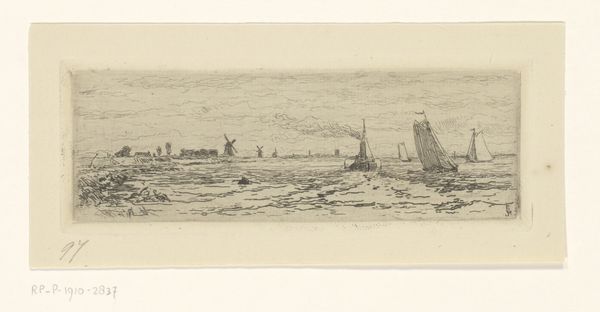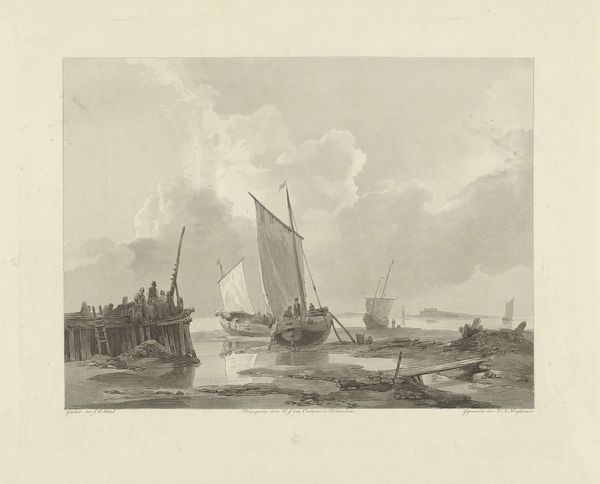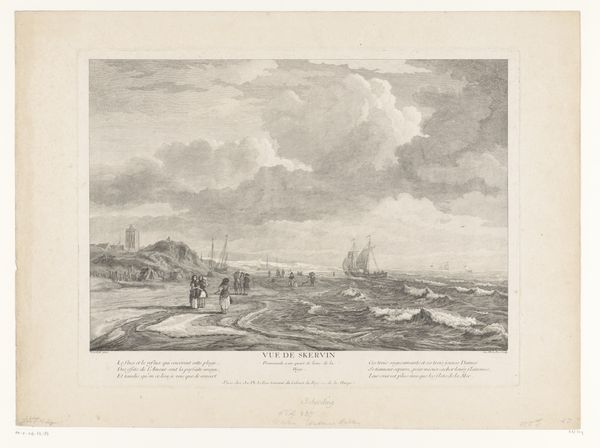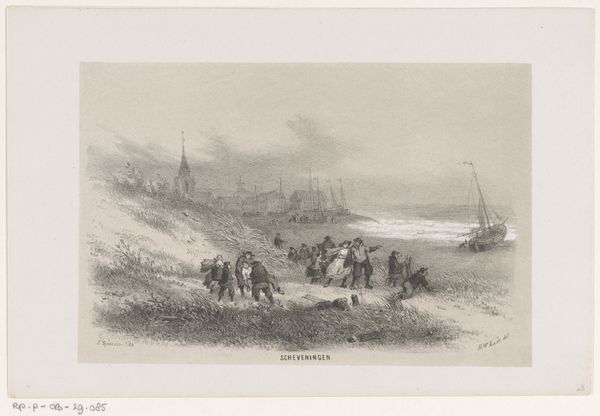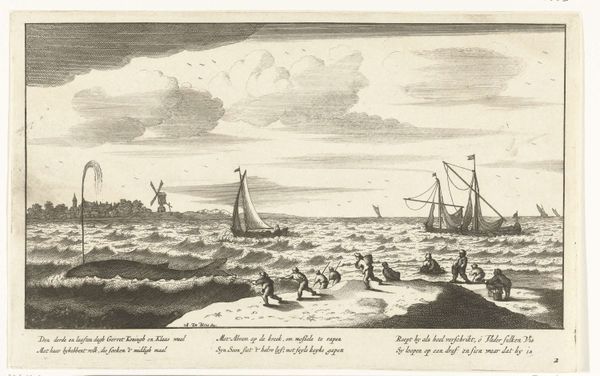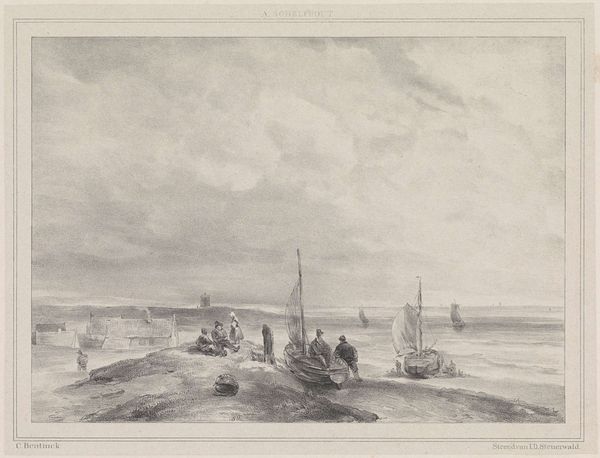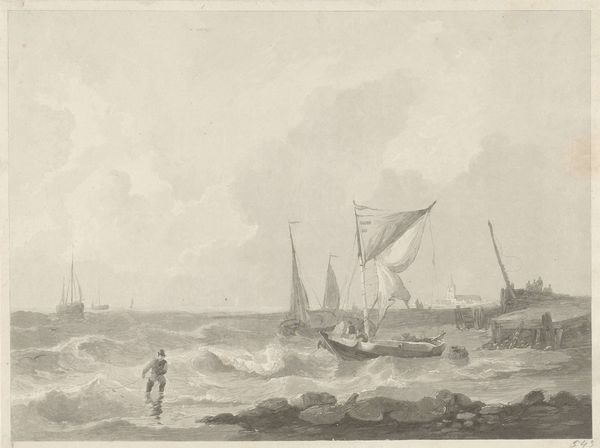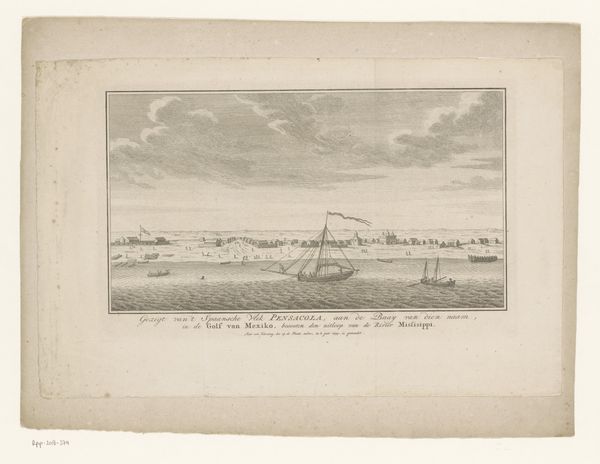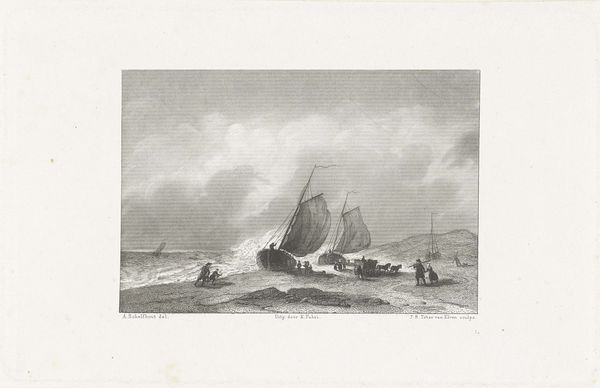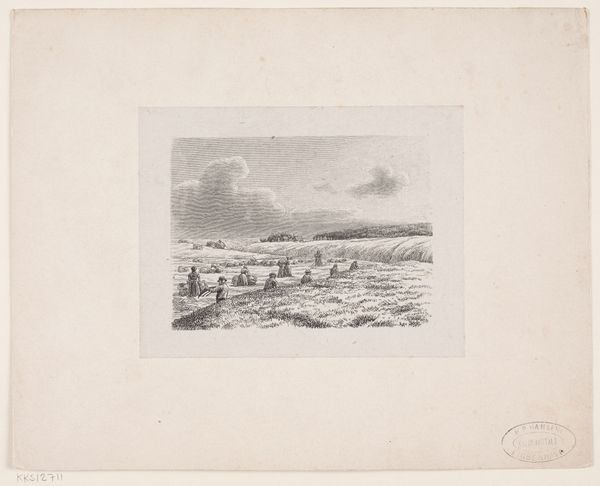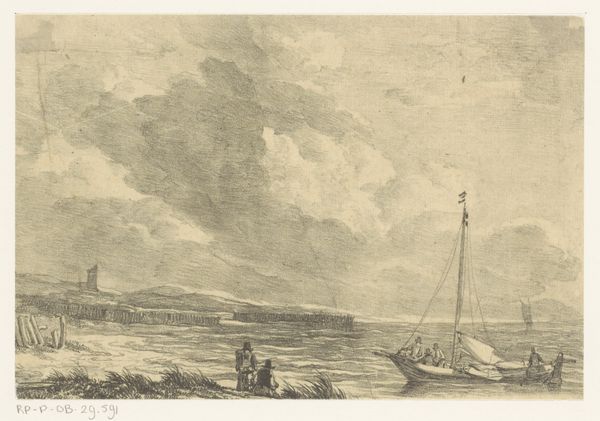
Duikers bergen de lading van de bij Texel gestrande schoener Martha, 1848 1848
print, engraving
old engraving style
landscape
genre-painting
history-painting
engraving
realism
Dimensions height 278 mm, width 328 mm
Curator: This print, created in 1848, is titled "Duikers bergen de lading van de bij Texel gestrande schoener Martha," which translates to "Divers recover the cargo from the schooner Martha, which ran aground near Texel". It’s a remarkably detailed engraving that captures a moment in history. Editor: My first impression is… bleak beauty. The muted tones, the distressed ship—it all whispers of hardship, but there's a strange elegance in the composition, wouldn't you agree? Like watching a slow-motion shipwreck with a morbid fascination. Curator: Indeed. The image is bisected. Above, we see men, horses, and smaller boats actively salvaging cargo. Below, in stark contrast, is a skeletal rendering of the wreck itself, serving as a potent symbol of loss and the often-invisible costs of maritime trade. Editor: You see the loss. I'm seeing the resilient spirit! Look at those horses pulling the goods from the wreckage. There's something profoundly human in this image, this struggle against the elements. I imagine the hopes tied to the salvaged materials, the families relying on those meager resources. It hits me in the gut, honestly. Curator: Consider the context, too. This incident occurred in 1848; beyond the obvious drama, shipwrecks at the time often resulted in complex legal disputes and questions of ownership—salvage rights were a contentious topic. The anchor prominent on the sand is such a compelling symbol of thwarted hopes, too. These scenes served almost as news reports for the general population before photography was common. Editor: Wow, so it’s kind of a snapshot, an illustration of legal entanglements meets raw human drama? I keep getting pulled back to the horse and rider dominating the midground - almost nonchalantly passing, the very essence of drama rendered mundane, do you think? That fascinates me - it lends such brutal and unexpected texture to the print. Curator: Exactly. Its stark realism reflects its period. It also reminds us how closely tied communities were to the sea and the ever-present threat it posed. Every symbol leads back to both community and fragility. Editor: Looking at this, I'm reminded that even disasters can be turned into…art, stories, reminders of resilience. I feel like I need a shot of something strong and a brisk walk on the beach now. Curator: Precisely, and I, now wish to consult several dusty old law books! It seems that sometimes, art history just encourages deeper curiosity.
Comments
No comments
Be the first to comment and join the conversation on the ultimate creative platform.

